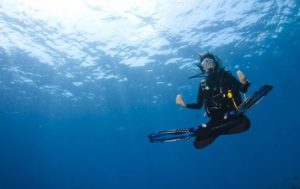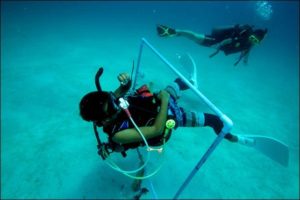Buoyancy is one of the most fundamental aspects of Scuba Diving. Not being able to control your
buoyancy can be frustrating to you and to the reef that you keep crashing into. Not to mention it
makes your dive far less enjoyable and the constant struggle of adjusting buoyancy makes you
frazzled, directly affecting your air consumption. Without buoyancy the art of Scuba Diving would be
very different. Therefore, why is one of the most important parts of this sport, the hardest to master?
Here are my top tips for mastering your buoyancy and becoming the best neutrally buoyant diver in
the group.

Proper weighting is one of the biggest factors that determines the ease of buoyancy. Many people
don’t take the time to learn about proper weighting. They just put an extra few kilos in so it’s easier to
get below the surface, right?. Wrong. Every extra kilo you add to make it easy getting down at the
surface, only makes it harder for buoyancy control at the bottom. If you add 1KG of extra weight, it
requires 1 Litre of air to compensate for the weight and make you neutrally buoyant. You can simply
perform a weight check at the surface. Emptying all the air from your BCD and holding a full breath,
you should float at eye level on the surface. If you pass the weight test you have enough weight to get
down, even if it doesn’t seem like it. The rest is just technique.
Techniques like breathing is fundamental to your buoyancy control. The difference in your buoyancy
with no air in your lungs VS a full breath is massive. Next time, before reaching for your inflator
mechanism to swim over top of the reef, try taking a nice deep breath and watch yourself slowly rise
up without having to adjust your BCD at all. Also making sure that you are breathing in a slow, relaxed
and consistent manner to not only help with air consumption but keep a steady baseline for you to
measure your buoyancy against.

Another technique that helps significantly is remaining as still as possible. Only kicking and not
swimming with your arms. The less flailing around and tipping from side to side will not only help the
visibility, but it can lift you up and raise closer to the surface without you even realising. Therefore
making you think you need more weight. Try to keep your hands locked together in front of your chest
and just swim in a slow and relaxed manner. Small, deliberate movements are the way to go!
Many divers hear the word trim but have no idea as to how it can help them in the water. Trim is all
about how you are positioned in the water, and how that affects your buoyancy. If your upper body is
tilted higher above your fins then, yes, you will be swimming forward but you will also gradually be
swimming upward. You’ll then notice yourself too high in the water, thinking it’s your BCD when in
reality it is your positioning. Try to ensure that you are positioned in a horizontal straight line, with
Shoulders, Hips and Feet at the same height. This will ensure you are gliding smoothly through the
water just like the fish.
Lastly, PRACTICE. The cliche “Practice makes perfect” couldn’t be truer with buoyancy control. The
more you experiment and get in touch with how your buoyancy is supposed to feel, the easier it
becomes. Once you become properly weighted, your trim is perfect, you’ve stopped flailing about and
you’re more focused on your breathing the rest will follow and it will become second nature. Get out
diving and give it a go! Good Luck!